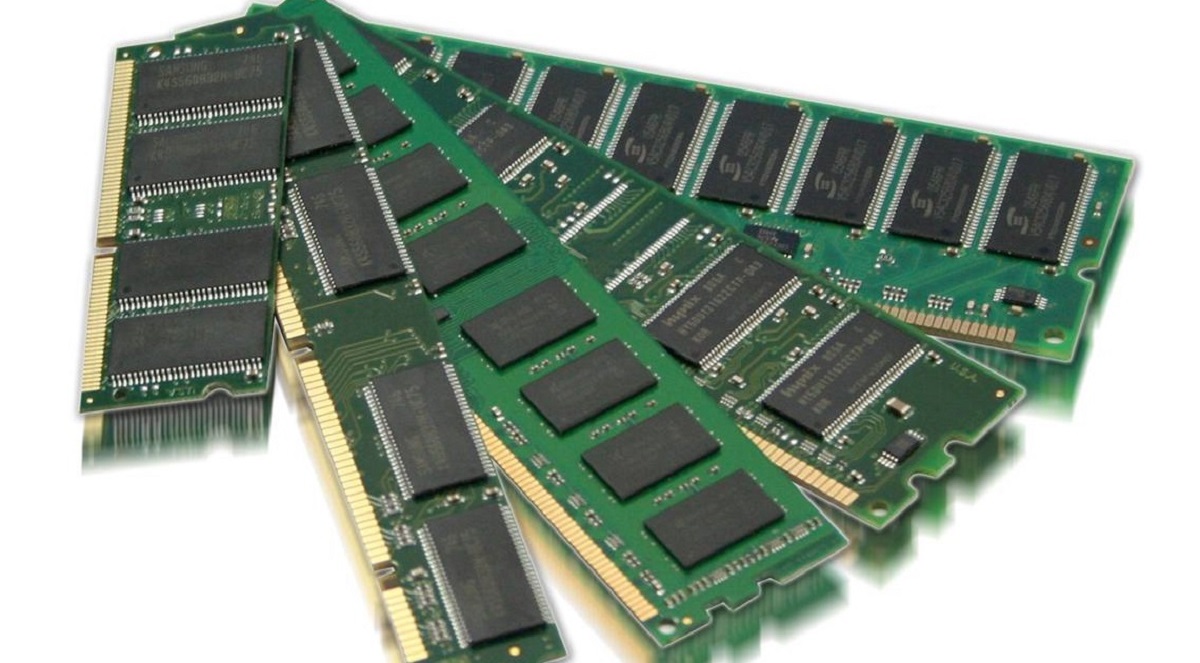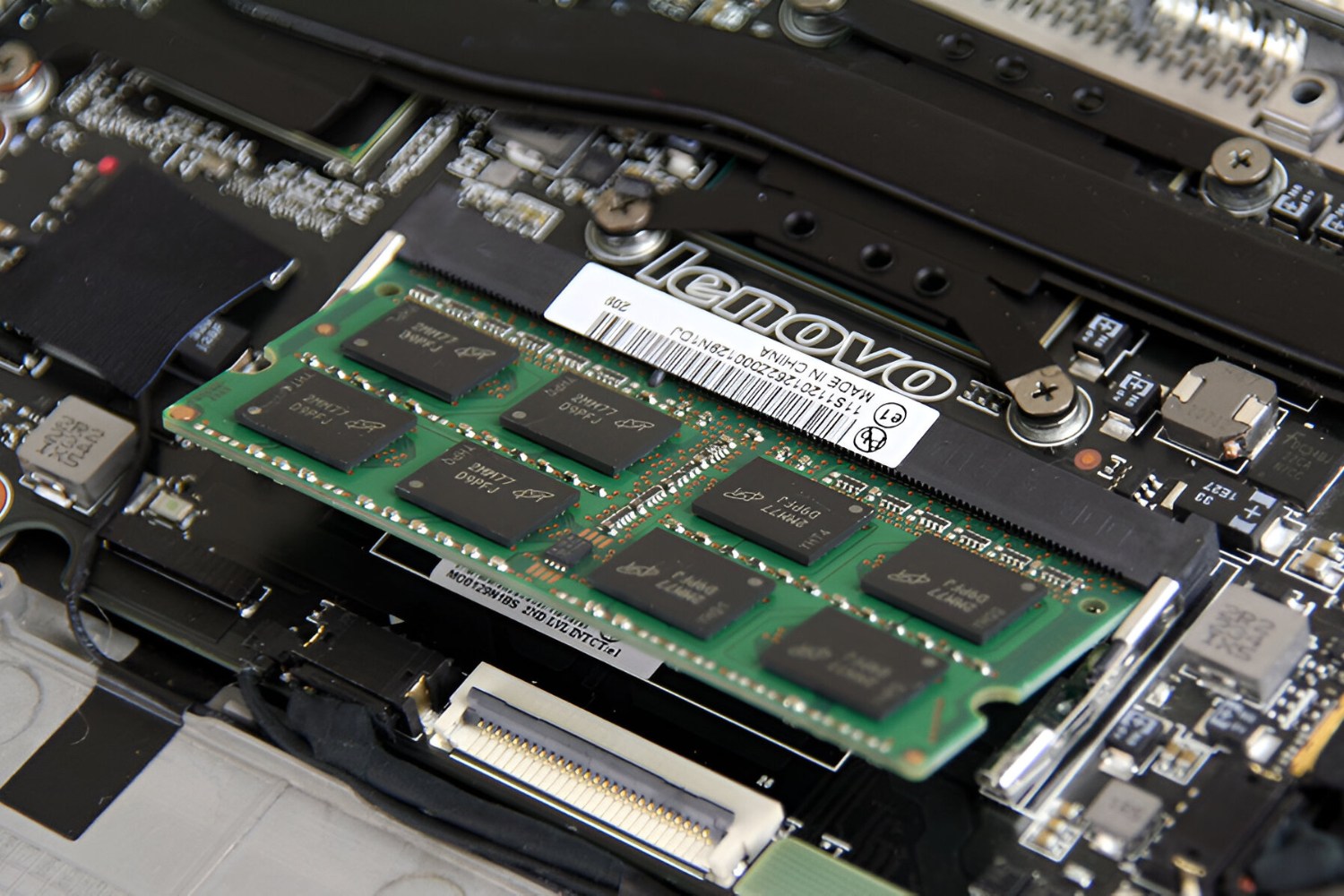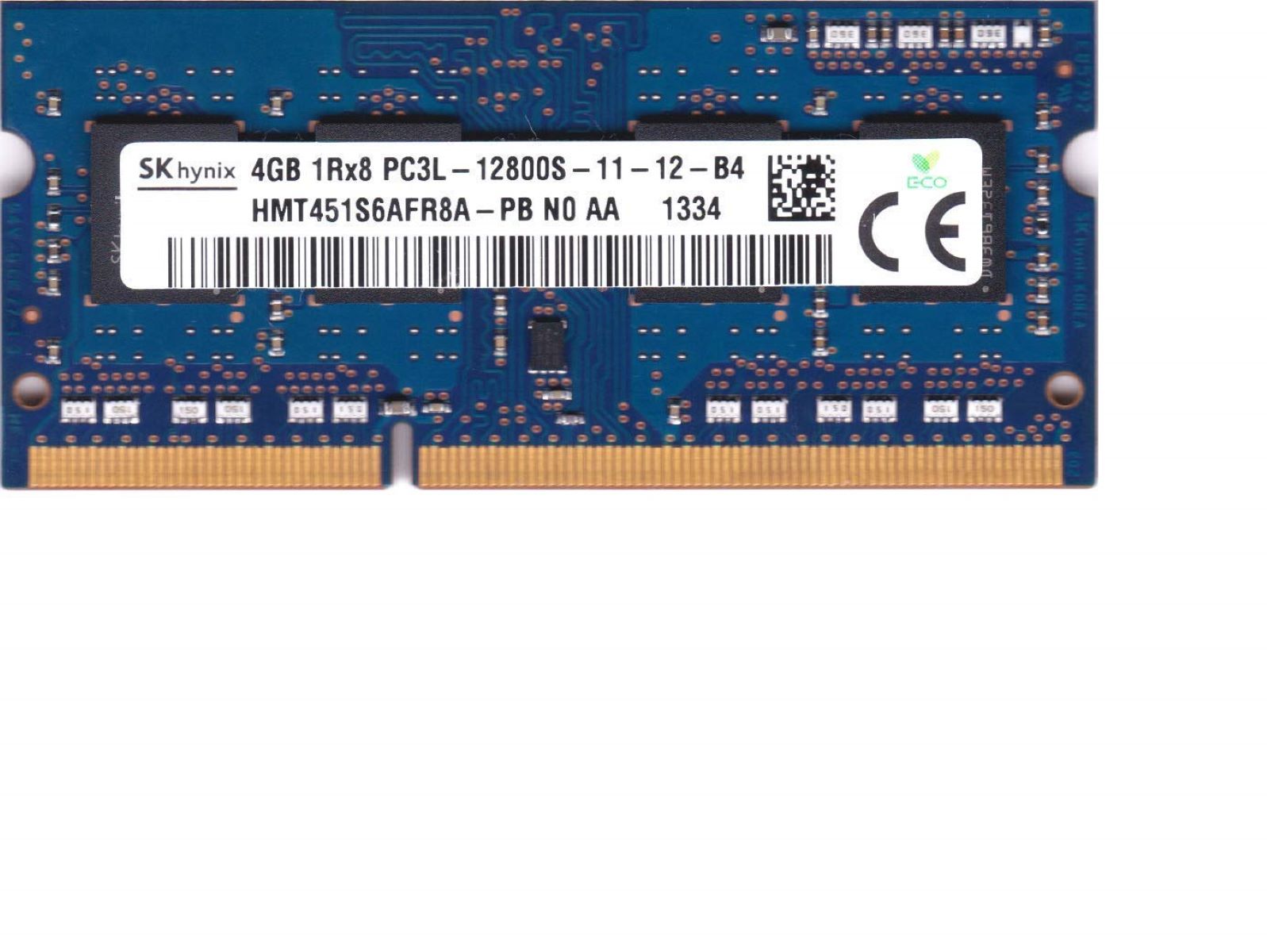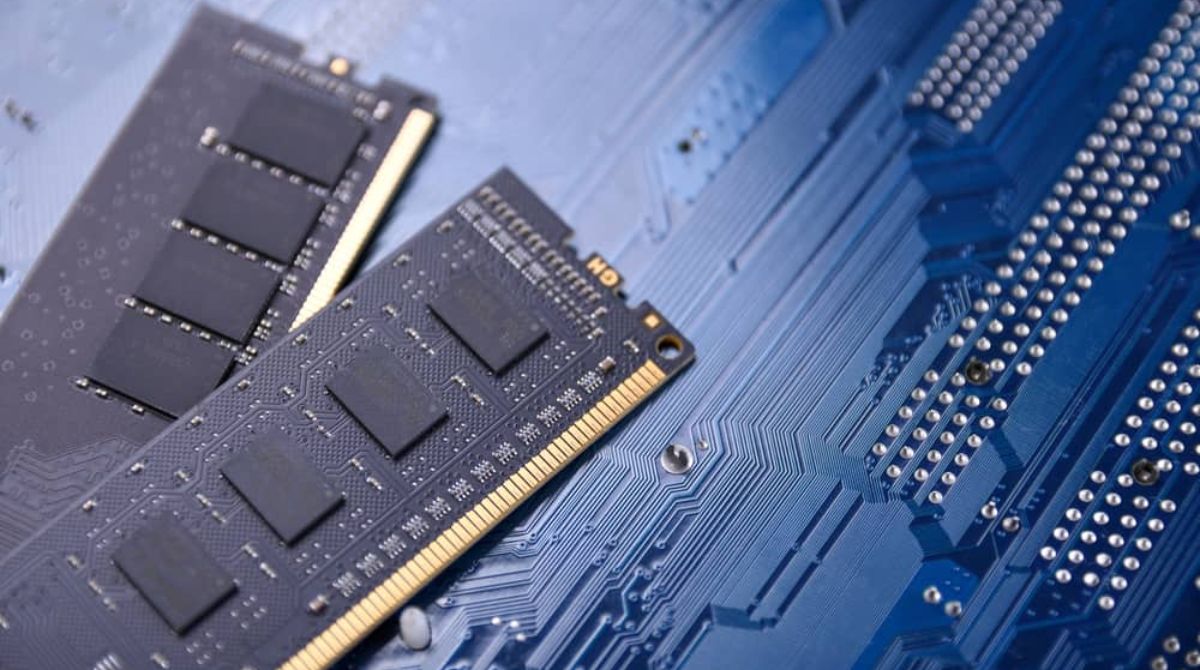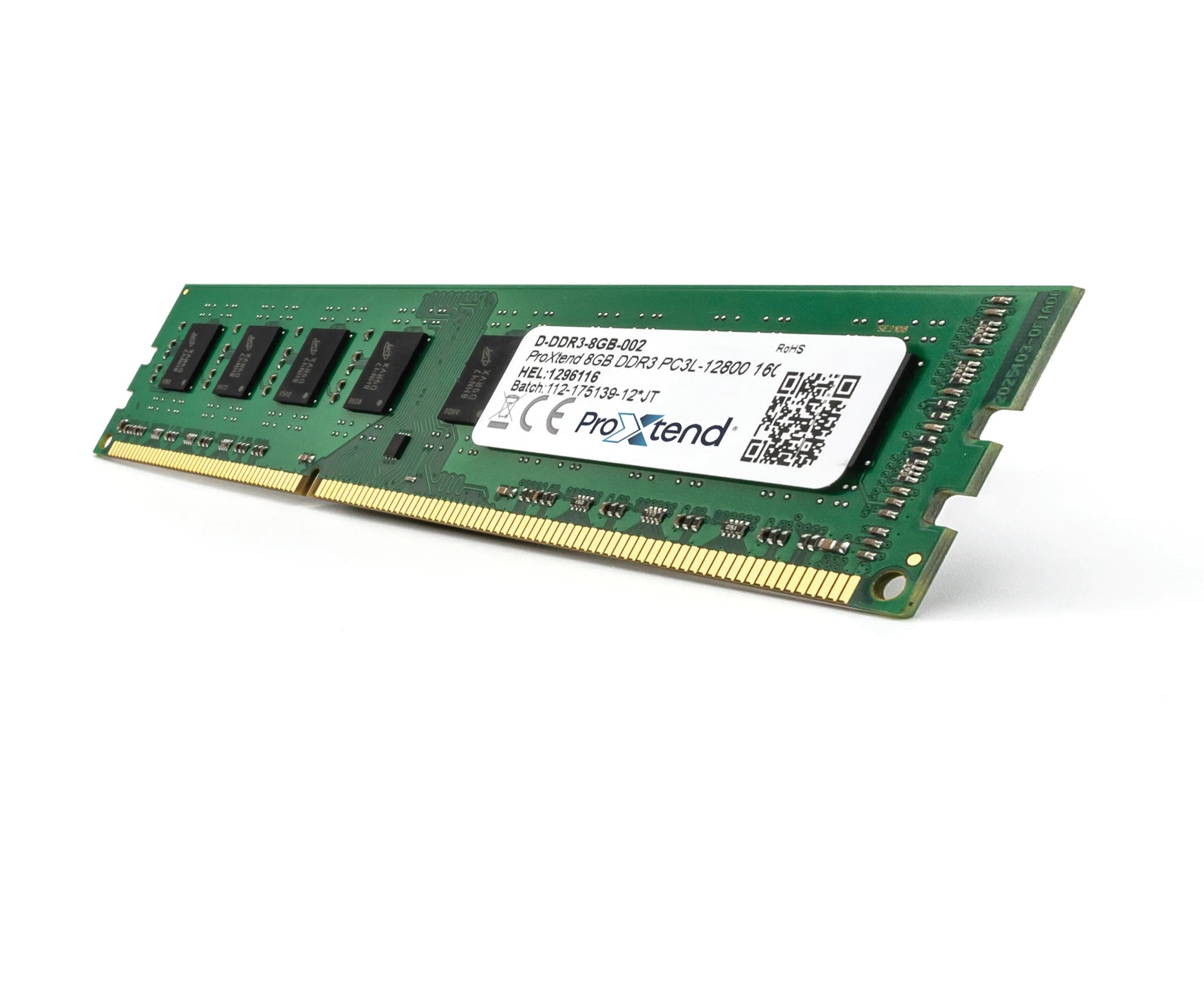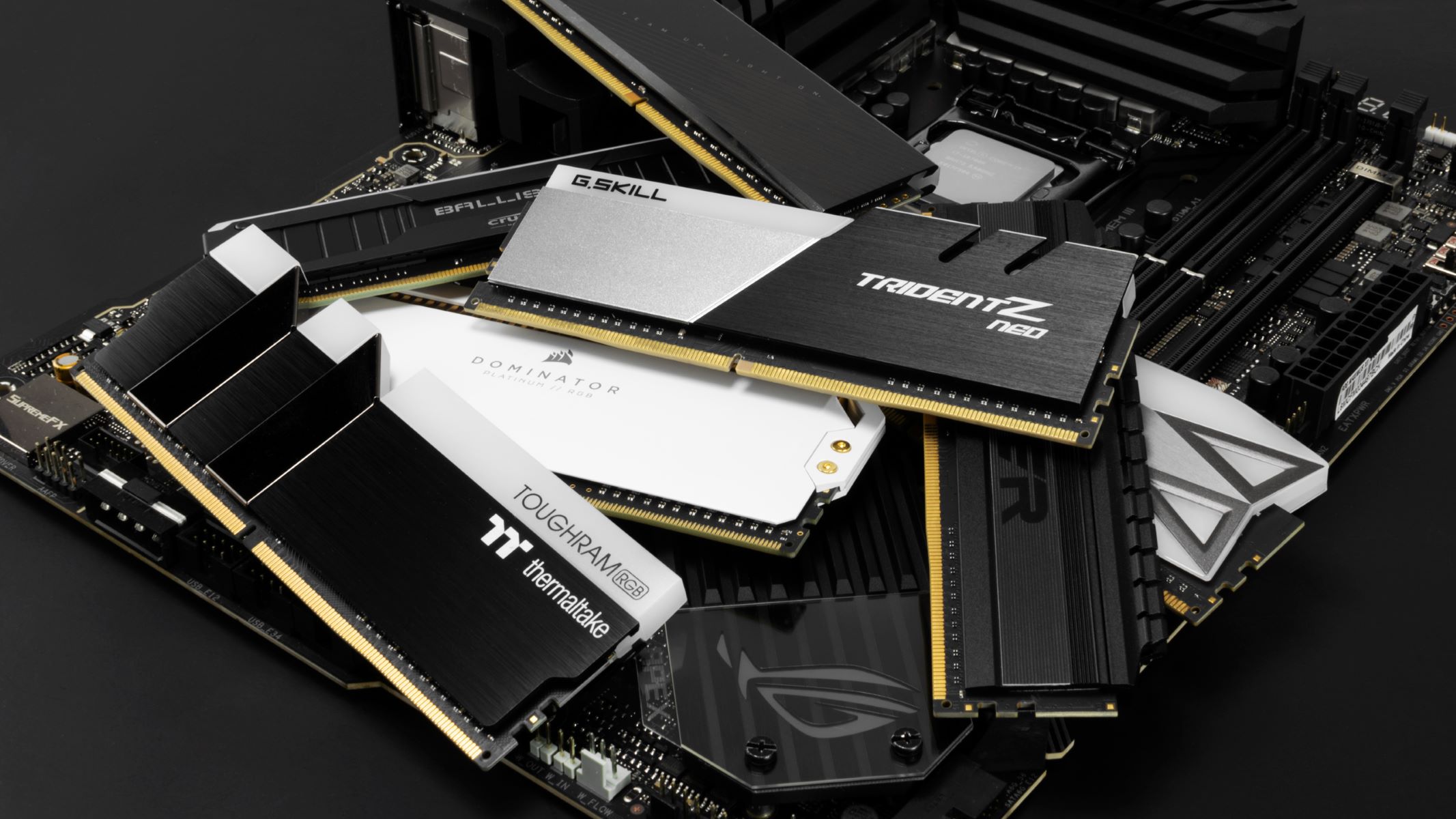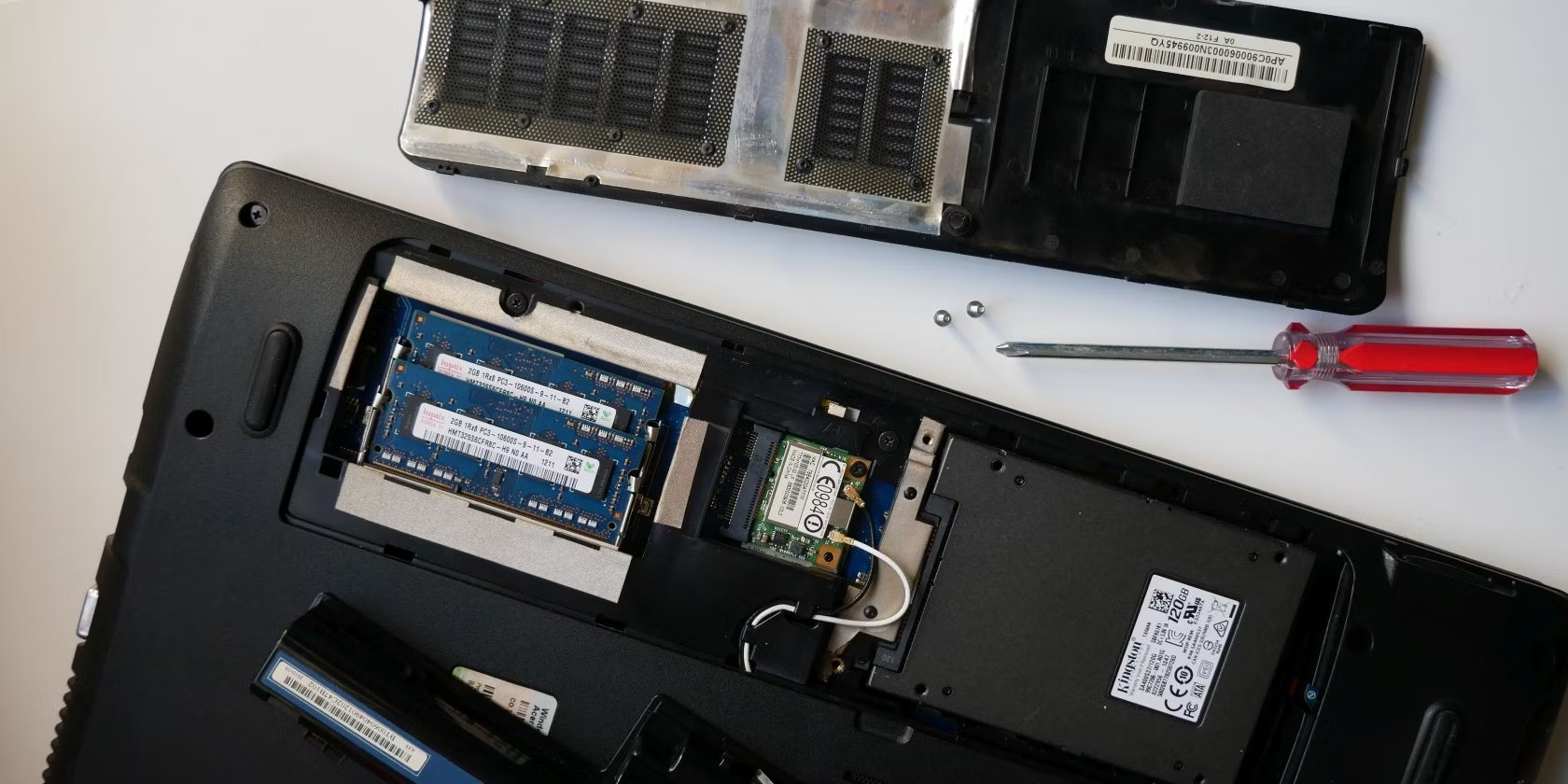Introduction
When it comes to understanding the different components of a computer, RAM is something that often comes up. But what exactly does GB of RAM mean? If you’re not familiar with technical jargon, it can be puzzling. However, fear not! In this article, we’ll break it down for you in a simple and easy-to-understand way.
GB stands for Gigabyte, a unit of storage capacity in the digital world. RAM, on the other hand, is an acronym for Random Access Memory, which plays a crucial role in the performance of your computer. These two terms may seem complex, but once you grasp the basics, you’ll have a better understanding of the inner workings of your device.
RAM serves as the temporary workspace for your computer where it can quickly access and store data that is currently being used. Think of it as your computer’s short-term memory, allowing for faster processing of tasks and applications. The more GBs of RAM you have, the more data your computer can store and access simultaneously, resulting in better overall performance.
In this article, we’ll dive deeper into the world of GB of RAM, exploring how it works, why you need it, different types of RAM, determining the appropriate amount of RAM for your needs, and even how to upgrade it if necessary.
So, whether you’re a tech-savvy individual wanting to know the ins and outs of your computer or a curious novice trying to understand the basics, let’s unravel the mysteries behind GBs of RAM and discover how it impacts your computer’s performance.
What Does GB Stand For?
GB is an abbreviation for Gigabyte, which is a unit of digital storage capacity. In the world of computers and technology, it is used to measure the amount of data that can be stored on a device, such as a hard drive, solid-state drive (SSD), or, in this case, RAM.
A Gigabyte (GB) is equal to 1,073,741,824 bytes. To put it into perspective, it is approximately a billion bytes. Each byte represents a single unit of information, and when combined, these bytes form the digital files, documents, images, videos, and applications we interact with on our computers.
When we refer to the GB of RAM, we are specifically talking about the amount of Random Access Memory available in the computer. RAM serves as a temporary storage space where the computer stores data that is currently being used. It acts as a bridge between the processor and the long-term storage devices, allowing for quick access and retrieval of information.
The capacity of RAM is measured in GB to indicate how much data can be processed simultaneously by the computer. The more GBs of RAM you have, the more data your computer can handle at any given moment. This means that having a higher GB of RAM allows for smoother multitasking and faster processing speeds.
For example, if you have a computer with 4GB of RAM, it means that it can handle 4 billion bytes of data at the same time. On the other hand, a computer with 8GB of RAM can handle double that amount – 8 billion bytes – resulting in improved performance and efficiency.
It’s important to note that the amount of GB of RAM your computer has is not the only factor influencing its performance. Other components such as the processor, graphics card, and storage devices also play a significant role. However, having an adequate amount of RAM is crucial for ensuring smooth and efficient operation of your computer.
Now that we understand what GB stands for and how it relates to RAM, let’s delve into how RAM works and why it is essential for your computer’s performance.
What Is RAM?
RAM, or Random Access Memory, is a vital component of any computer system. It serves as a temporary storage space that allows the computer to quickly access and retrieve data that is currently in use. Unlike long-term storage devices such as hard drives or SSDs, RAM is much faster and provides immediate access to the data it holds.
Think of RAM as your computer’s short-term memory. When you open an application or a file, it gets loaded into RAM so that the processor can quickly access the data and execute instructions. The larger the amount of RAM you have, the more data can be stored and accessed simultaneously, resulting in faster performance and smoother multitasking.
RAM works closely with the computer’s processor to execute tasks. When you perform an action, such as clicking on an application or opening a web browser, the processor sends a request to the RAM to load the necessary data into its memory. This data can include program instructions, files, and other resources that are needed for the task at hand.
Once the data is loaded into RAM, the processor can access it directly and process it quickly. This allows for faster response times and improved overall performance. Without RAM, the computer would have to rely solely on long-term storage devices like hard drives, which are much slower in comparison.
Another critical aspect of RAM is its ability to hold data temporarily. This means that once the computer is shut down or restarted, the data stored in RAM is lost. Long-term storage devices, such as hard drives or SSDs, are responsible for storing data permanently even when the power is turned off. RAM provides a temporary workspace where data can be accessed quickly but is not meant for long-term storage.
Having an adequate amount of RAM is crucial, especially when running resource-intensive applications or multitasking. Insufficient RAM can result in slower performance, lagging applications, and even system crashes or freezes. Therefore, considering the amount of RAM required for your specific needs is essential when purchasing or upgrading your computer.
Now that we have a better understanding of what RAM is and how it functions, let’s explore how RAM works in conjunction with other system components.
How Does RAM Work?
RAM, or Random Access Memory, operates on a simple but efficient principle that allows for quick and seamless data access within a computer system. It functions as a temporary storage space where the computer can load and store data that is currently in use, providing rapid access to this information whenever needed.
When you power on your computer, a portion of the RAM is allocated to the operating system and essential system files. The remaining portion of RAM is available for applications and data that you interact with while using your computer. As you open programs or files, the necessary data is loaded from long-term storage devices (like hard drives or SSDs) into the available sections of RAM.
RAM consists of millions of memory cells, organized into small compartments called addresses. Each of these addresses can store a specific piece of data, typically represented by a byte (8 bits). The memory cells in RAM are made up of electronic circuits that can store and retrieve data at a much faster rate than traditional storage devices.
One of the key features of RAM is its ability to provide random access to any location within its memory cells. This means that the computer can access and retrieve data from any address in RAM with the same speed, regardless of its physical location in the memory module. This random access capability allows for efficient multitasking and quick retrieval of data, contributing to overall system performance.
When an application or file is loaded into RAM, the processor is then able to access the required data much more quickly than if it had to retrieve it from a long-term storage device. This results in faster processing speeds and smoother operation of software and applications. The more RAM your computer has, the more data can be loaded into it, allowing for better multitasking and improved performance.
It’s important to note that RAM is a volatile form of memory. This means that the data stored in RAM is lost when the power is turned off or the computer is restarted. To prevent data loss, it’s crucial to save your work and important files to long-term storage devices, such as hard drives or cloud storage.
In summary, RAM works by providing a fast and temporary storage space for data that is actively being used by the computer. Its random access capability enables quick retrieval of information, contributing to the speed and efficiency of your computer’s operation.
Why Do You Need GBs of RAM?
Having an adequate amount of GBs of RAM is crucial for ensuring optimal performance and efficiency in your computer system. RAM serves as a temporary storage space where data is quickly accessed and retrieved by the processor. The more GBs of RAM you have, the more data your computer can handle simultaneously. Here are some reasons why you need GBs of RAM:
1. Multitasking: If you’re someone who frequently runs multiple applications or tasks simultaneously, having sufficient GBs of RAM is essential. Each application requires a portion of RAM to function, and not having enough can lead to sluggish performance and slowdowns. With more GBs of RAM, your computer can smoothly handle multitasking without performance bottlenecks.
2. Speed and Responsiveness: RAM plays a crucial role in the overall speed and responsiveness of your computer. When data is loaded into RAM, it can be quickly accessed by the processor, resulting in faster execution of tasks and applications. This leads to quicker response times, smoother operation, and a more enjoyable computing experience.
3. Resource-demanding Applications: Some applications, such as video editing software, graphic design tools, and modern games, require a significant amount of resources to function optimally. These resource-intensive applications can quickly consume large amounts of RAM. Having enough GBs of RAM ensures that these applications have enough space to operate efficiently, preventing slowdowns and crashes.
4. Future-Proofing: As technology continues to advance, software and operating systems become more demanding in terms of resource requirements. By having a higher amount of GBs of RAM, you are future-proofing your computer. It allows your system to handle upcoming updates and software releases without the need for immediate hardware upgrades.
5. Virtualization and Productivity: If you engage in activities such as virtualization or running virtual machines (VMs) on your computer, having ample GBs of RAM is crucial. VMs require a portion of RAM to operate effectively, and not having enough can lead to performance degradation and instability. Additionally, if you work with resource-intensive productivity tools like video rendering or data analysis software, having more GBs of RAM can significantly speed up these tasks.
Overall, having sufficient GBs of RAM is essential for a smooth and efficient computing experience. It allows for better multitasking, improved speed and responsiveness, the ability to run resource-demanding applications, future-proofing, and efficient virtualization. Consider your computing needs and the types of tasks you perform when determining the appropriate amount of GBs of RAM for your computer system.
Different Types of RAM
RAM has evolved over the years, leading to the development of different types to meet the increasing demands of computer systems. Each type has its own characteristics and specifications. Here are some of the common types of RAM:
1. DDR4 (Double Data Rate 4): DDR4 is the latest and most widely used type of RAM. It offers improved speed and efficiency compared to its predecessor, DDR3. DDR4 RAM modules have a higher bandwidth, allowing for faster data transfer rates. They are also more energy-efficient, consuming less power while providing better performance. DDR4 is compatible with modern computer systems and is the recommended choice for most users.
2. DDR3 (Double Data Rate 3): DDR3 RAM was the dominant type before DDR4 came into the picture. It provides decent performance and is still found in many older computer systems. DDR3 RAM modules have a lower bandwidth compared to DDR4, but they are more affordable and readily available. While not as fast as DDR4, DDR3 RAM can still handle everyday computing tasks effectively.
3. DDR2 (Double Data Rate 2): DDR2 RAM was widely used in computers from the early to mid-2000s. It had a lower bandwidth and slower data transfer rates compared to DDR3 and DDR4. DDR2 RAM is now obsolete and not commonly found in modern computer systems. If you have an older computer, it’s likely to be DDR2 compatible.
4. DDR (Double Data Rate): DDR RAM, also known as DDR1, was the first generation of the DDR series. It offered faster data transfer rates than the previous SDRAM (Synchronous Dynamic Random Access Memory) technology. DDR RAM is now outdated and hardly used in modern computer systems.
5. Other RAM Types: Aside from the DDR series, there are other specialized types of RAM, such as ECC (Error-Correcting Code) RAM and SODIMM (Small Outline Dual Inline Memory Module) RAM. ECC RAM is specifically designed for servers and workstations, offering error correction capabilities to ensure data integrity. SODIMM RAM, on the other hand, is smaller in form factor and is commonly used in laptops and some compact desktop systems.
When upgrading or purchasing RAM, it’s essential to consider the compatibility of the RAM type with your computer’s motherboard and the specific requirements of your system. Consult your computer’s documentation or manufacturer’s website to determine the compatible RAM types and maximum supported capacity.
In summary, DDR4 is the most common and widely used type of RAM in modern computer systems. DDR3 is still relevant for older systems, while DDR2 and DDR RAM are outdated. Specialized types like ECC RAM and SODIMM RAM cater to specific computing needs. Choose the appropriate RAM type that matches the requirements of your computer system to ensure optimal performance.
How Much GBs of RAM Do You Need?
Determining the optimal amount of GBs of RAM for your computer depends on several factors, including the type of tasks you perform and the specific requirements of the software and applications you use. Here are some considerations to help you determine the appropriate amount of GBs of RAM:
1. Basic Usage: If your computer usage mainly involves everyday tasks like web browsing, email, and word processing, 4GB to 8GB of RAM should be sufficient. This amount of RAM allows for smooth multitasking and ensures that your computer can handle these basic tasks without slowdowns.
2. Multimedia and Casual Gaming: If you enjoy streaming high-definition videos or playing casual games, 8GB to 16GB of RAM is recommended. These activities require additional memory to handle the resource demands of multimedia playback and gaming. With this amount of RAM, you can enjoy smooth video playback and a better gaming experience.
3. Resource-Intensive Applications: If you work with resource-demanding applications like video editing software, graphic design tools, or 3D modeling software, you will benefit from having 16GB to 32GB or even more of RAM. These applications require a significant amount of memory to process and manipulate large files and complex tasks. More RAM will provide better performance and prevent bottlenecks.
4. Virtual Machines and Productivity: If you frequently work with virtual machines or run multiple instances of resource-intensive applications simultaneously, 32GB or more of RAM is recommended. Running VMs and resource-demanding software simultaneously requires a substantial amount of memory to maintain smooth performance and prevent resources from being overutilized.
5. Future-Proofing: If you want to ensure that your computer remains capable of handling future software updates and more demanding applications, consider adding extra headroom in terms of RAM. This might mean opting for 16GB or 32GB of RAM, even if your current needs don’t require it. This way, you can extend the lifespan of your computer and avoid the need for immediate hardware upgrades later on.
It’s important to note that the maximum amount of RAM supported by your computer depends on your motherboard and operating system limitations. Check your computer’s documentation or manufacturer’s website to determine the maximum RAM capacity and compatible RAM modules for your system.
Consider your specific needs, budget, and the specifications of your computer system when deciding on the amount of GBs of RAM. It’s usually recommended to have more RAM than the minimum requirements of your software, as it allows for smoother multitasking and future growth. Investing in sufficient RAM ensures that your computer performs optimally and meets the demands of your tasks.
Upgrading RAM
If you find that your computer is running slow or struggling to handle resource-intensive tasks, upgrading your RAM can be a cost-effective way to improve its overall performance. Here are some steps to guide you through the process of upgrading your RAM:
1. Check Compatibility: Before purchasing new RAM modules, it’s essential to ensure compatibility with your computer. Check your computer’s documentation or manufacturer’s website to find out the maximum RAM capacity supported and the type of RAM modules that are compatible with your system. This information will help you choose the right RAM modules for your upgrade.
2. Determine Required RAM Capacity: Evaluate your current usage and the demands of the tasks and applications you run. Consider the recommended RAM requirements for your software and the types of activities you engage in. If you’re using resource-intensive software or frequently multitask, you may benefit from a larger RAM capacity. Determine how much RAM you need based on your usage patterns and requirements.
3. Purchase Suitable RAM Modules: Once you have determined the compatible RAM type and capacity, purchase the appropriate RAM modules from a reliable vendor. Make sure to match the specifications of the existing RAM if you plan on adding additional modules. If you’re replacing the existing RAM, ensure that the new module(s) meet the necessary requirements.
4. Power Off and Unplug: Before installing or removing RAM modules, make sure to power off your computer and unplug it from the power source. This precaution prevents any potential damage to your computer or RAM modules due to electrical currents.
5. Locate RAM Slots: Open your computer case or access panel to locate the RAM slots. These slots are usually easy to find and may be labeled as DIMM slots. Note the number of available slots and the arrangement of the existing RAM modules, as this will guide your installation process.
6. Install the New RAM: Carefully insert the new RAM module(s) into the vacant RAM slot(s) at a slight angle, aligning the notches on the module with the groove in the slot. Apply gentle and even pressure until the module is fully seated in the slot. Ensure that the module locks securely into place. If you are replacing existing RAM modules, remove them by gently pushing down the retention clips or levers on the sides of the slot.
7. Power On and Verify: Once the new RAM module(s) are installed, close the computer case or access panel, reconnect the power, and power on your computer. Verify that the system recognizes the new RAM by checking the BIOS or using diagnostic tools provided by the operating system. If the new RAM is detected, you can proceed to enjoy the improved performance of your upgraded computer.
Remember, when upgrading RAM, it’s best to install modules of the same type and speed to ensure compatibility and optimal performance. Mixing different RAM speeds or types may result in the RAM running at the speed of the slowest module or even compatibility issues.
By following these steps and taking appropriate precautions, you can successfully upgrade your computer’s RAM and experience improved performance, smoother multitasking, and better overall responsiveness.
Conclusion
Understanding the concept of GBs of RAM and its importance in computer systems can greatly enhance your knowledge of how your device operates. RAM, or Random Access Memory, serves as a temporary storage space that enables quick access to data necessary for seamless performance. The amount of GBs of RAM your computer has directly influences its ability to handle multitasking, process tasks efficiently, and provide a smooth computing experience.
We learned that GB stands for Gigabyte, a unit of digital storage capacity, and that RAM is responsible for storing and retrieving data currently in use by the computer’s processor. The more GBs of RAM you have, the more data your computer can handle simultaneously.
We explored different types of RAM, such as DDR4, DDR3, and DDR2, with DDR4 being the most commonly used type in modern computer systems. Additionally, we discussed the factors to consider when determining the appropriate GBs of RAM for your needs, such as basic usage, multimedia and gaming, resource-intensive applications, virtual machines, and future-proofing.
If you find that your computer is not performing as desired, upgrading your RAM can be a viable option. We provided a step-by-step guide to help you through the process, from checking compatibility and determining the required RAM capacity to purchasing suitable RAM modules and installing them correctly.
In conclusion, having sufficient GBs of RAM is crucial for optimal computer performance. It allows for improved multitasking, faster data access and retrieval, and the ability to handle resource-demanding applications. By understanding how RAM works and its significance in computer systems, you can make informed decisions when it comes to purchasing or upgrading your computer’s RAM, ensuring a smoother and more efficient computing experience.







